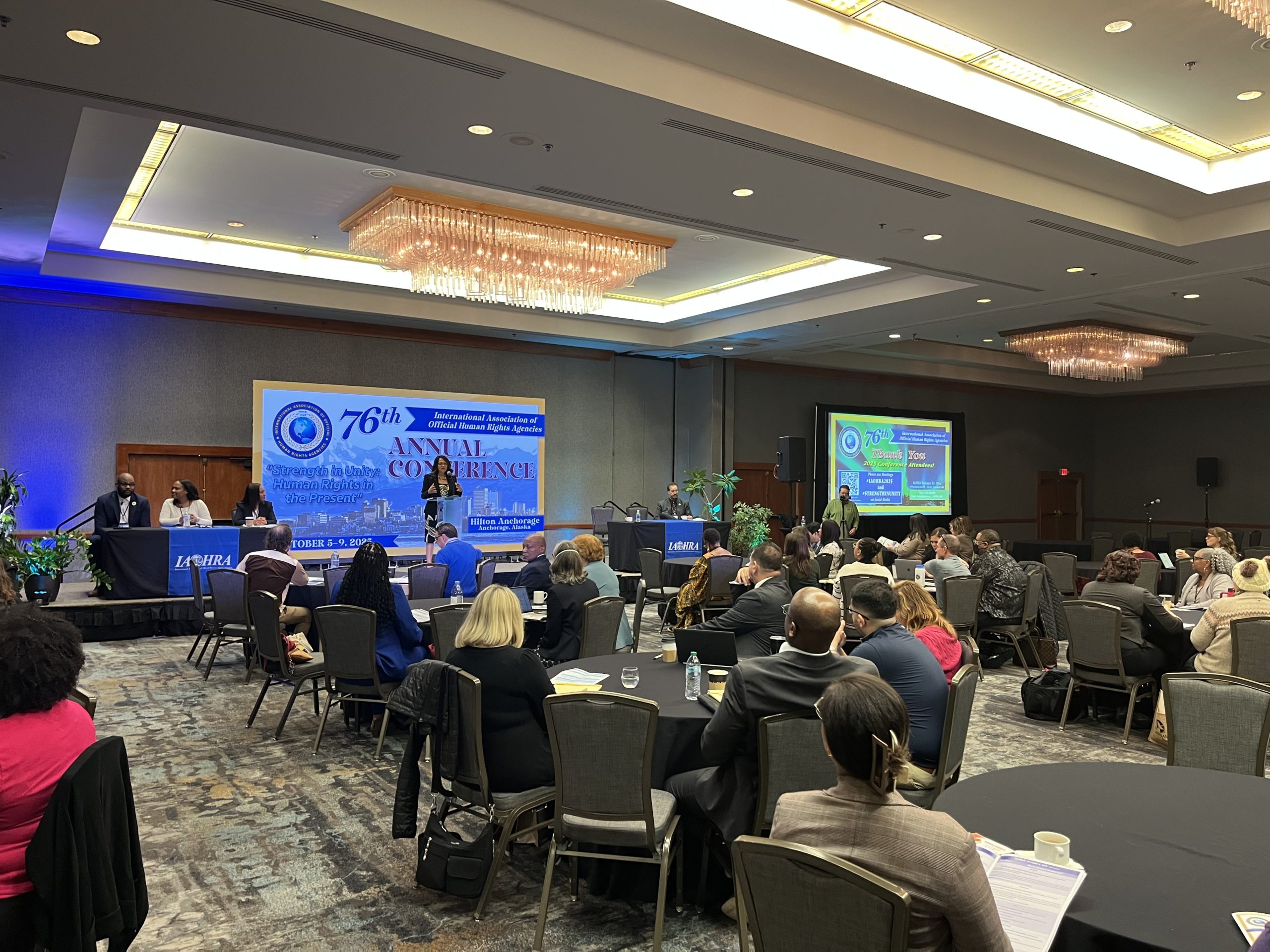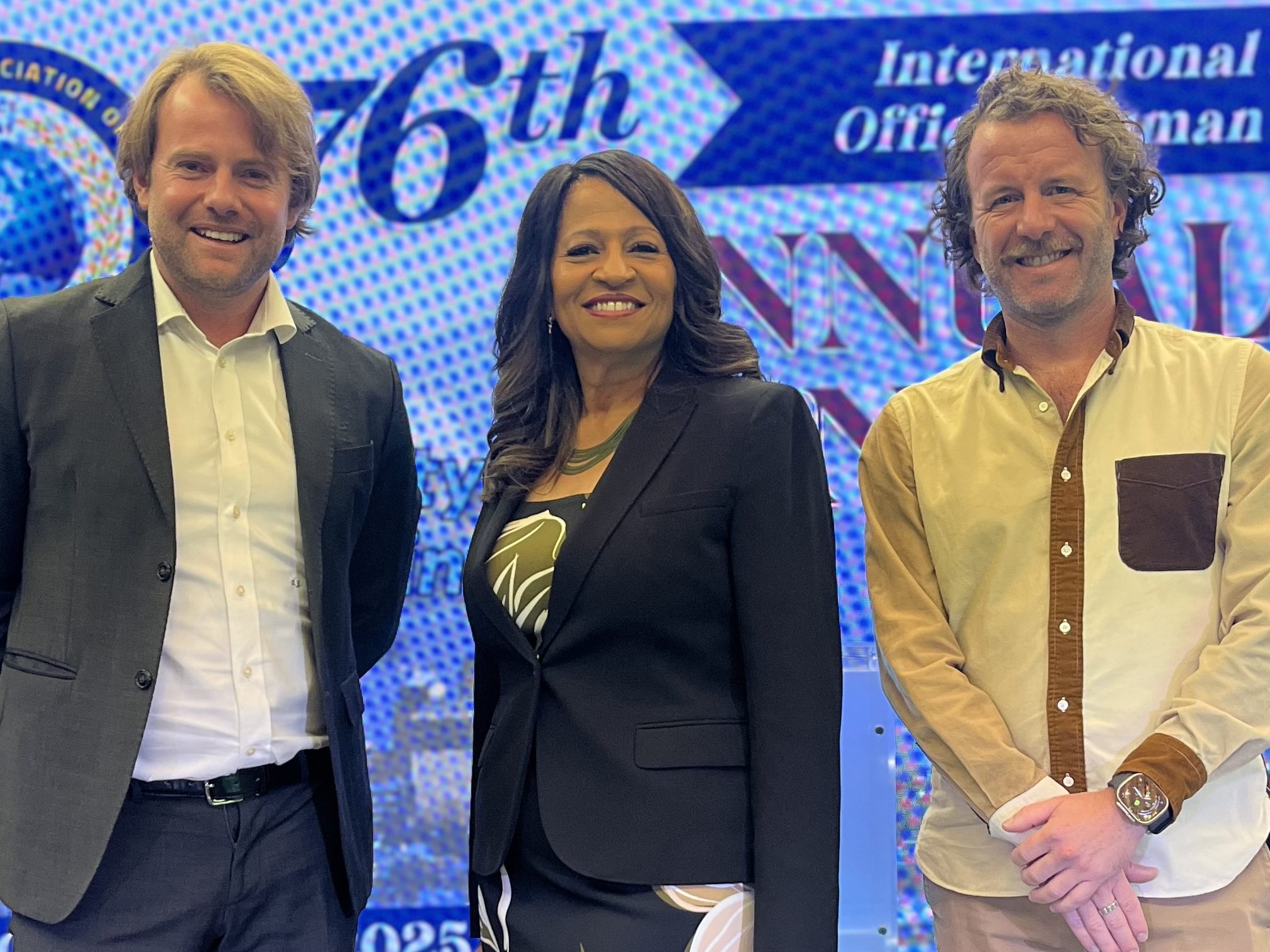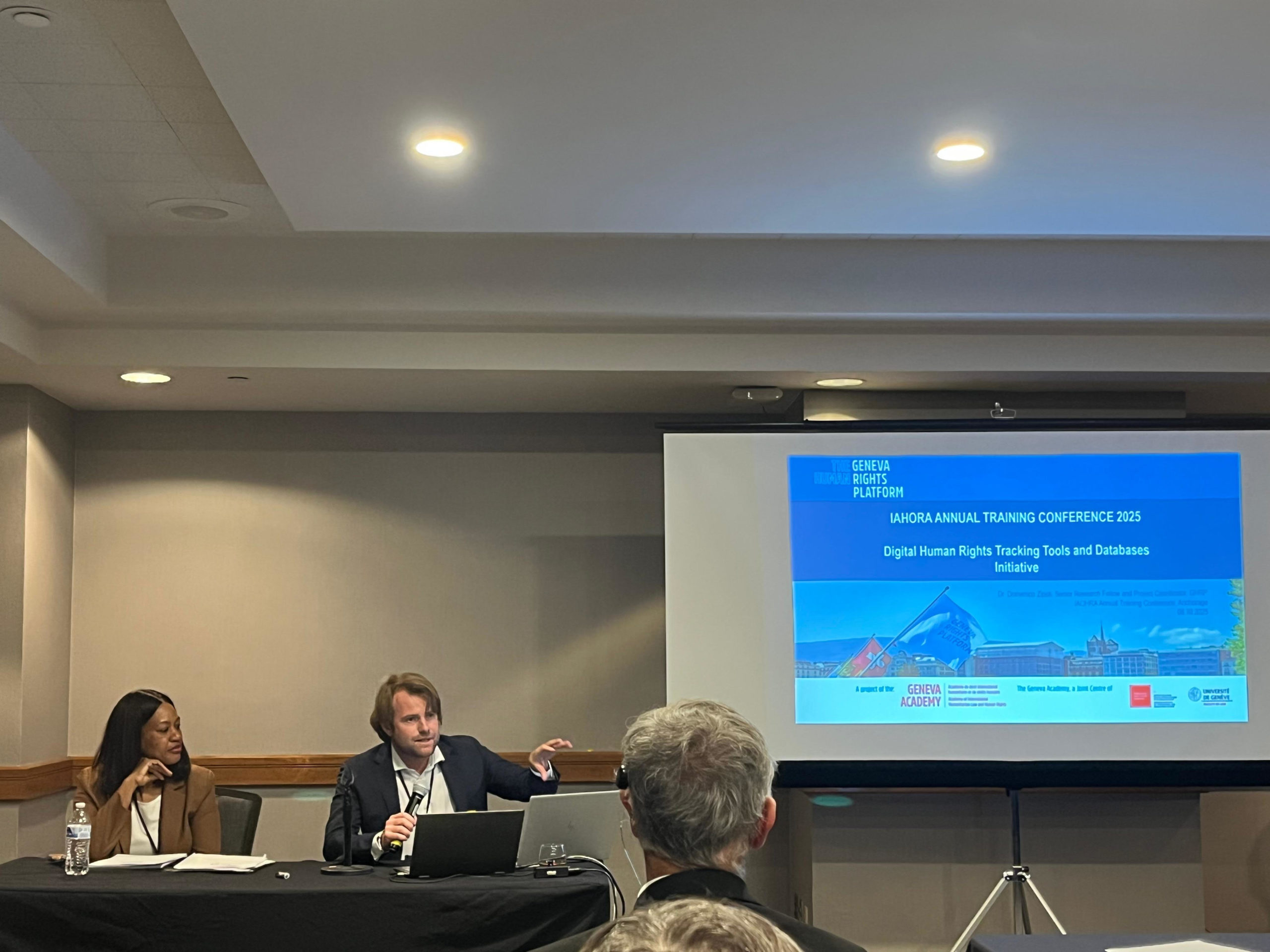GHRP’s Work on Digital Human Rights Tracking and AI for Human Rights Monitoring Discussed Across the Globe
At opposite ends of the world – in Anchorage and Athens – the Geneva Human Rights Platform (GHRP) continued to bring its expertise on digital transformation and human rights monitoring to global audiences. Through its ongoing work on Digital Human Rights Tracking Tools and Databases (DHRTTDs) and the responsible integration of Artificial Intelligence (AI) in monitoring and implementation processes, the GHRP is increasingly recognized as a key hub for dialogue at the intersection of technology, human rights law, and governance practice.
Anchorage: Bringing Digital Human Rights Tools to Local Governments



At the 2025 Annual Training Conference of the International Association of Official Human Rights Agencies (IAOHRA), held in Anchorage, Alaska, GHRP Project Coordinator Dr. Domenico Zipoli joined the panel ‘How to Implement Human Rights in Your City, County or State Agency’.
In his presentation, ‘Digital Transformation for Human Rights Implementation: Leveraging DHRTTDs and AI for Local Impact’, Zipoli highlighted how local and regional human rights commissions across the United States can harness digital tools to streamline human rights information management, connect local action to international reporting systems, and enhance visibility within UN human rights mechanisms.
Drawing on insights from the Academy Briefing on Human Rights Data Revolution briefing and the AI Decoded working paper, his intervention explored how AI and machine learning can empower commissions to manage data more efficiently, through automated clustering, predictive analytics, and multilingual processing, while underlining the importance of ethical safeguards, data privacy, and human oversight. He also presented practical examples from the GHRP’s Directory of Digital Human Rights Tracking Tools and Databases, including platforms such as Samoa’s SADATA, OHCHR’s National Recommendations Tracking Database (NRTD), Paraguay’s SIMORE Plus, and HURIDOCS’ Uwazi, emphasizing their adaptability for local contexts and their potential to strengthen coordination between cities, counties, and state agencies.
‘By leveraging these digital tools, local actions in the US can directly feed into global human rights reporting — ensuring that city, county, and state realities are visible in Geneva and beyond’, Zipoli noted, encouraging IAOHRA members to pilot interoperable tools tailored to their needs.
Learn more about the IAOHRA 2025 Conference here.
Athens: Human Rights and Digital Business at the Southeastern European Dialogue on Internet Governance



Following its engagement at EuroDIG 2025 in Strasbourg, the GHRP was invited by the Council of Europe to participate in the 10th Forum of Stakeholders within the Southeastern European Dialogue on Internet Governance (SEEDIG), held on 10–11 October in Athens, Greece.
Conceived as an open platform for dialogue and cooperation on internet governance and digital policy in Southeastern Europe, the 10th anniversary edition was themed “A Decade of Dialogue and Cooperation: What’s Next?”, bringing together stakeholders to reflect on the future of regional collaboration in digital governance and policymaking.
This year’s SEEDIG featured a session titled “Public-Private Policy Dialogue: Human Rights and Digital Business,” in which the GHRP participated, focusing on the role of private actors in the human rights field and on ways to strengthen their efforts to meet human rights standards. The session explored the evolving relationship between digital innovation and human rights, examining how private actors can adopt responsible approaches to new technologies, such as AI, that enhance their contribution to the realization of human rights.
Research consultant Milica Mirković delivered a presentation titled ‘AI for Human Rights Monitoring: Opportunities, Risks, and the Role of Business‘, which drew on the GHRP’s previous research and engagement on the use of AI for human rights and SDG monitoring. Mirković, who also researches the use of AI in human rights monitoring as a PhD candidate at the European University Institute, presented findings from the AI Decoded working paper, highlighting both the benefits of automating DHRTTDs and the risks posed by the irresponsible or poorly regulated deployment of AI in a field as sensitive as human rights monitoring.
Drawing on examples of AI-powered DHRTTDs from the GHRP’s Directory, she further discussed how businesses can learn from the use of AI-based monitoring tools by human rights actors to assess their own human rights impacts and conduct risk assessments, and reflected on the concrete contributions private actors can make as stakeholders in advancing responsible AI governance and policymaking.
‘Developing responsible AI requires input from civil society, governments, and the private sector,’ Mirković stated, emphasizing that responsibility lies not only with businesses to take action, but also with other stakeholders to involve them in shaping responsible practices.
Learn more about SEEDIG 10 here.